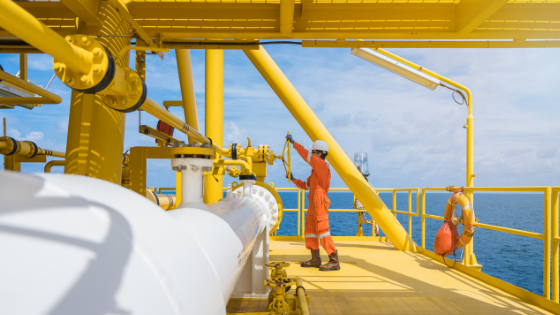All too often, we talk about safety as a question of policies, programs, training, and finding the right protective equipment. And while all those things are important in a safety program, the truth is, there are plenty of other topics that go overlooked while you’re addressing the usual suspects.
The problem? Focusing on the usual suspects leads you to overlook critical topics in employee health & safety.
Remember, health & safety is about more than policies. It’s also the way you think about safety, and that shows through in a variety of ways. Here’s one unexpected employee health & safety topic that may completely change the way you think about safety.
Vulnerability
When you think about safety, vulnerability probably isn’t what comes to mind. It certainly wasn’t what came to mind for Tommy Chreene, an oil rig veteran who was working in the Gulf of Mexico in 1997. At the time, Shell embarked on building what was, at the time, the world’s deepest oil drilling platform.
To prepare workers, Shell scheduled a series of safety workshops. But these workshops didn’t focus on drilling equipment or safe practices. Instead, Tommy Chreene and his colleagues spent over twelve hours a day practicing vulnerability.
The workers initially bristled at the idea. After all, the unwritten rule on oil rigs was that workers were allowed 15 minutes to mourn even the most gruesome deaths before getting back to work. The workforce ascribed to a traditional version of masculinity: men don’t cry. They certainly never showed vulnerability.
These workshops were designed to cut through years of that training. In one exercise, the men were asked to tell stories of their lives in front of colleagues. Out came stories of alcoholic parents, of being hungry as children. Tommy Chreene, known for having a tough reputation, broke down and wept before his colleagues while speaking of his son’s terminal illness.
The Power of Vulnerability
In a work environment like oil rigs where toughness is considered an essential workforce trait, these exercises are lifesaving.
Men on these oil rigs – and in many similar workplaces, like construction, or even in everyday environments – were taught that showing vulnerability is weakness. They internalized the idea that they were not allowed to show vulnerability because they faced death in their work every single day. The idea was that showing weakness would leave you ill-prepared for the difficult and dangerous reality of the work.
The truth is not showing vulnerability creates an even more dangerous situation. When workers feel they are not allowed to show vulnerability, they will not ask for help, even when they need it. Introducing vulnerability to the workplace allows workers to trust their colleagues on a fundamental level, which translates directly to safety performance.
Don’t believe it? Just look at Shell, which saw a breathtaking 84% drop in the companywide accident rate after the workshops, alongside a stunning rise in productivity, efficiency, and reliability that far exceeded industry benchmarks.
A Holistic Approach to Employee Health & Safety
The point about vulnerability drives a larger point about employee health & safety – it’s most effective when your approach is holistic. Safety lies in everything you do, in even the smallest details.
Looking for more unexpected ways to approach safety? Check out our blog for more great tips, like this one on how creative thinking drives safety.
